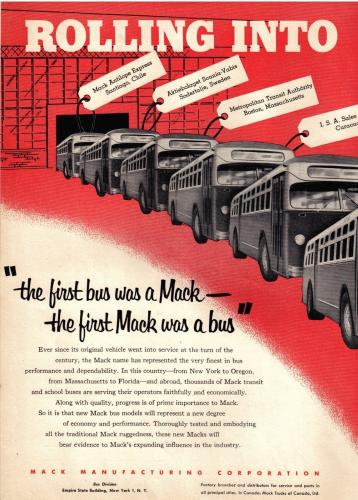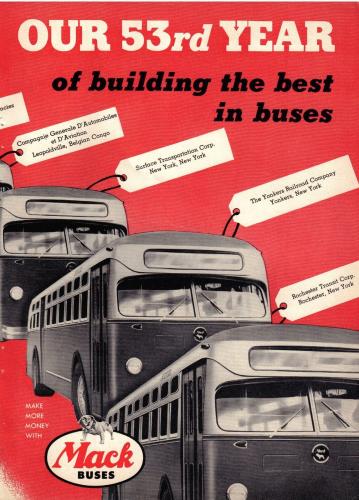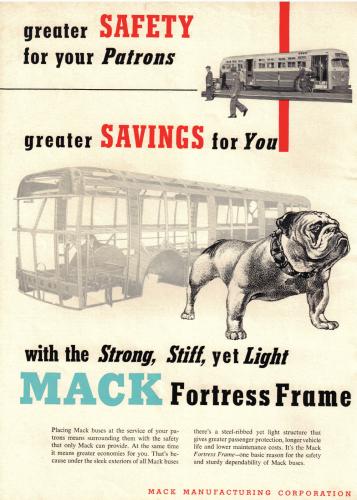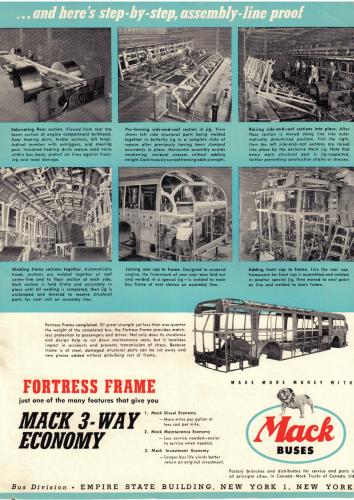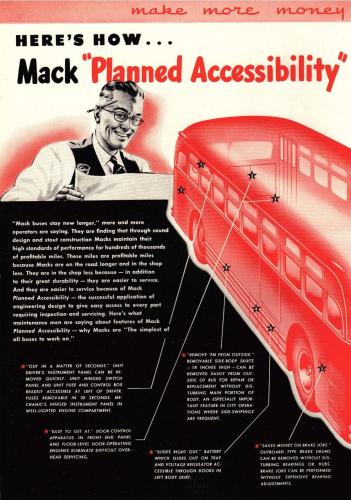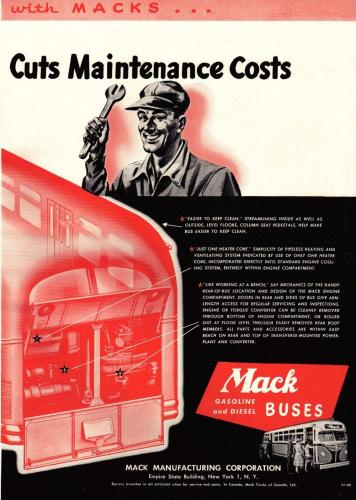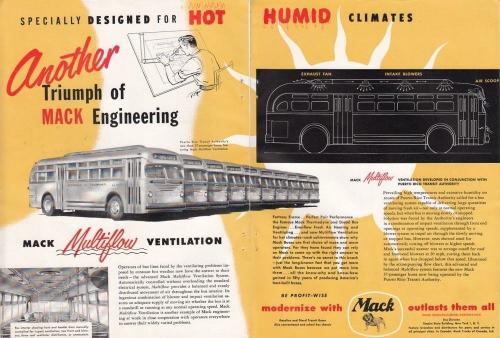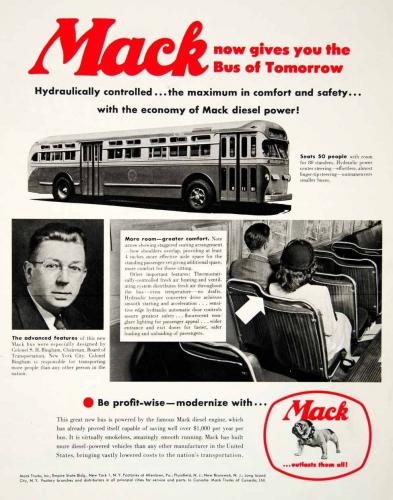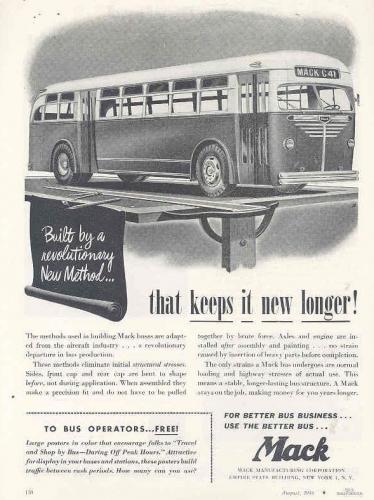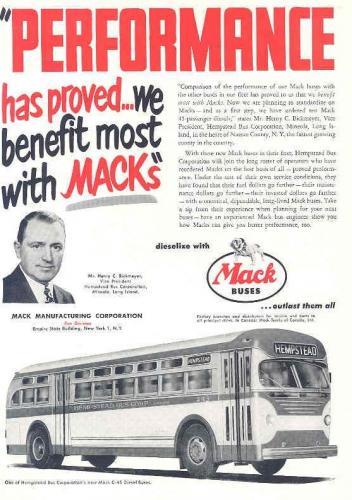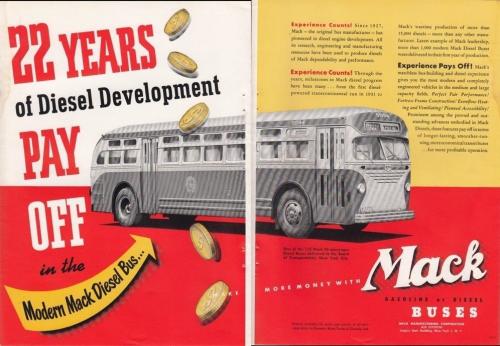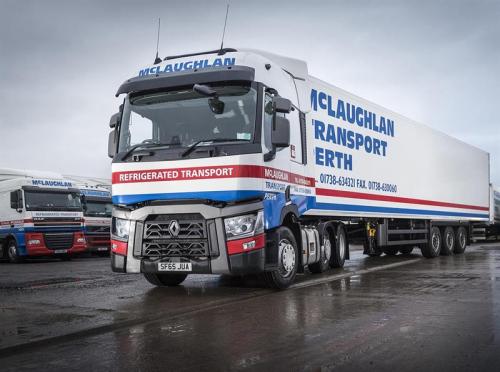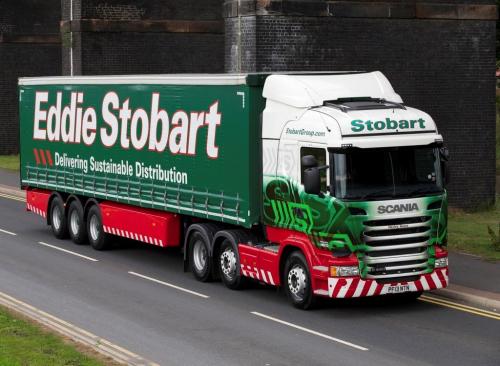
kscarbel2
Moderator-
Posts
18,550 -
Joined
-
Days Won
112
Content Type
Profiles
Forums
Gallery
Events
Blogs
BMT Wiki
Collections
Store
Everything posted by kscarbel2
-
Commercial Motor TV - sponsored by DAF Trucks / January 15, 2016
-
Scania Group Press Release / January 13, 2016 The Globetrotter, the story of a Scania L110 series tipper that, after leaving the factory in 1970 as part of a 200 truck order for work in Africa and later China, finally found its way back home to Sweden. "The first journey of my life lasted 40 years. And just when I thought it was all over someone came along and gave me a new life"
-
Dakar 2016: Team Petronas De Rooy Iveco aims for victory
kscarbel2 replied to kscarbel2's topic in Trucking News
1/16/2016 After Eurocargo “International Truck of the Year 2016” and Magelys “International Coach of the Year 2016”, Iveco triumphs in 2016 Dakar Rally Three Iveco trucks in the Top 5: outstanding results for the Iveco pilots. The Dutch pilot Gerard de Rooy, in his Iveco Powerstar, triumphs in one of the toughest editions in the Dakar history. Iveco conquers the top of the podium in the Dakar 2016. Gerard De Rooy, leader of Team PETRONAS De Rooy Iveco, won the 2016 edition of the most competitive rally race in the world. His performance over the thirteen stages showed once again the pilot’s outstanding driving and navigation skills and confirmed the Iveco Powerstar’s qualities. Iveco dominated one of the most competitive Dakar ever with five different truck brands in the Top 10. Pierre Lahutte, Iveco Brand President commented: “Iveco’s vehicles triumph in the 2016 edition of the Dakar, with a resounding success and recognition, after the Eurocargo “International Truck of the Year 2016” and Magelys “International Coach of the Year 2016” titles. Iveco puts the excellent reliability of its trucks on the trails of the Dakar rally, enabling the team’s outstanding pilots to give their best performance in the race. I would like to thank Gerard De Rooy, Federico Villagra, Anton Van Genugten, Pep Vila and Ales Loprais and their remarkable teams for the determination and drive they have shown.” This is De Rooy’s second victory in the Dakar’s Truck category. At the end of the competition, the Dutch champion dedicated his victory to his Belgian navigator, Jurgen Damen, who passed away last year. On the podium in third place, Federico Villagra, “El Coyote”, is the revelation of this edition. The Argentinian pilot, in his Iveco Powerstar, was followed by millions of local fans, in a market where Iveco is the leader. Ton Van Genugten finished fifth in his Trakker. He is the other great revelation of the 2016 Dakar: while he was one of two quick service trucks supporting the Team’s lead pilots – De Rooy, Villagra and Loprais – he succeeded in staying ahead of the other leading competitors and crossing the line in 5th place, missing a stage win only because he stopped to support his Team leaders, demonstrating the wonderful team spirit of the Iveco team. Spaniard Pep Vila, behind the wheel of another Iveco Trakker, took tenth place. The expert Spanish pilot, now at his 6th Dakar with Iveco and 5th with Team De Rooy, fought until the end to finish in the Top Ten. The Dakar race has also been a great opportunity for Iveco to highlight the performance of its engines: the Iveco Cursor 13 engines - manufactured in Bourbon Lancy, France and specifically prepared for the race by FPT Industrial at its R&D centre in Arbon, Switzerland – known for their performance and durability, powered Iveco’s latest success in the rally. The 2016 edition with its 9,000km South American route was perfect to showcase the Iveco trucks’ versatility and strength. FINAL RANKING – TRUCKS 1. GERARD DE ROOY (NLD), IVECO Co-pilot: MOI TORRALLARDONA (E) Mechanic: DAREK RODEWALD (PL) 2. Mardeev (RUS), Kamaz 3. FEDERICO VILLAGRA (ARG), IVECO Co-pilot: JORGE PEREZ COMPANC (ARG) Mechanic: MEMI ANDRES (ARG) 4. Stacey (NLD), MAN 5. TON VAN GENUGTEN (NLD), IVECO Co-pilot: ANTON VAN LIMPT (NLD) Mechanic: PETER VAN EERD (NLD) 6. De Baar (NDL), Renault Trucks 7. Nikolaev (RUS), Kamaz 8. Valtr (CZE), Tatra 9. Versluis (NLD), MAN 10. PEP VILA (E), IVECO Co-pilot: XAVI COLOME ROQUETA (E) Mechanic: MARC TORRES SALA (E) 11. Ardavichus (KAZ), Tatra 12. Van del Heuvel (NDL), Scania Dropped out in Stage 5: ALES LOPRAIS (CZ) Co-pilot: FERRAN ALCAYNA MARCO (E) Mechanic: BERNARDUS DER KINDEREN (NL) To learn more about Iveco's teams and vehicles and to follow Iveco day-by-day throughout the race, visit www.iveco.com/dakar. -
Dakar 2016: Team Petronas De Rooy Iveco aims for victory
kscarbel2 replied to kscarbel2's topic in Trucking News
1/16/2016 Iveco and De Rooy entered the final stretch of the Dakar with a wide lead Just one day from the end of the 2016 Dakar Rally, Gerard de Rooy is maintaining a lead in the general classification with his Iveco Powerstar and will give his all in the last 180 kilometers to be crowned champion for the second time. Stage 12 of the most difficult rally race in the world was held yesterday and Iveco made it to the podium once again. Federico Villagra landed the brand in second place, just 3 minutes and 14 seconds behind the winner, Pieter Versluis, in a Trucks special covering 267 timed kilometers. With this outcome, Federico Villagra, a first-timer in the Trucks category of The Dakar, is closing in on the third step of the podium in the general. Gerard de Rooy continues racking up kilometers without any issues and strengthening his chances of winning The Dakar a second time, the first time being in 2012. The Dutchman was able to finish the day just 5 minutes and 24 seconds behind the leader, putting him in 5th place. He was even able to gain a few minutes on Mardeev in the general. Another positive takeaway from Stage 12, which went from San Juan to Villa Carlos Paz, was Spanish pilot Pep Vila's performance with his Iveco Trakker, putting him in 11th place, 10 minutes and 46 seconds behind Versluis. This result puts him in the Top 10, just what the experienced pilot from Catalonia was hoping for, with just one special to go. Ton van Genugten lost time at the beginning of today's special, but he did a great job of making up for it, as was his custom in this Dakar, with a fast-moving pace in the other Iveco Trakker. Van Genugten is still 4th in the general and, if De Rooy and Villagra are able to hang on to their 1st and 3rd place spots, he might just give Iveco the chance to put three of its trucks in the Rally's Top 4. The goal for Iveco today is to set a steady pace with their vehicles in the remaining 180 kilometers. De Rooy is ahead of Mardeev by 1 hour 13 minutes and 10 seconds. Villagra is more than 30 minutes ahead of Van Genugten, who is currently in third, but the Dutchman had better watch outfor Hans Stacey, who is only 11 minutes behind him. Pep Villa will have to do the same with Artur Ardavichus, who is 20 minutes behind him; both are fighting for the last place within the Top 10. The last special of the 2016 Dakar will be held today between the cities of Villa Carlos Paz and Rosario, where the winners will be met with a classic podium ceremony and thousands of fans cheering on the heroes that made it to the end of the world's most difficult race. Stage 12 − Trucks 1. Versluis (NLD), MAN – 3:14:06 2. FEDERICO VILLAGRA (ARG), IVECO – plus 3 minutes 14 seconds 3. Stacey (NLD), MAN – plus 3 minutes 18 seconds 4. Valtr (CZE), Tatra – plus 5 minutes 1 second 5. GERARD DE ROOY (NLD), IVECO − plus 5 minutes 24 seconds 11. PEP VILA (SPA), IVECO – plus 10 minutes 46 seconds 12. TON VAN GENUGTEN (NLD), IVECO – plus 13 minutes 52 seconds General Classification − Trucks 1. GERARD DE ROOY (NLD), IVECO 42:29:59 2. Mardeev (RUS), Kamaz – plus 1 hour 13 minutes 10 seconds 3. FEDERICO VILLAGRA (ARG), IVECO – plus 1 hour 43 minutes 45 seconds 4. TON VAN GENUGTEN (NLD), IVECO – plus 2 hours 17 minutes 10 seconds 5. Stacey (NLD), MAN – plus 2 hours 28 minutes 57 seconds 10. PEP VILA (SPA), IVECO – plus 4 hours 38 minutes 55 seconds To learn more about Iveco's teams and vehicles and to follow Iveco day-by-day throughout the race, visit www.iveco.com/dakar. -
Dakar 2016: Team Petronas De Rooy Iveco aims for victory
kscarbel2 replied to kscarbel2's topic in Trucking News
1/15/2016 Dakar 2016: Iveco and De Rooy take yet another step towards victory During a special stage at very high temperatures between La Rioja and San Juan, the Dakar caravan continues to move towards its final destination in Rosario, with Iveco holding onto a big difference in the general classification. Another day at the Dakar under temperatures above 40 C (104 F). The Bikes and Quads race was cut short, but Cars and Trucks moved on. Some of them are fitted with AC equipment, but others are not, and they are the true heroes of these hot past days. Gerard de Rooy is leading the Trucks general classification. He started off the day 1 hour and 15 minutes ahead of the Russian Kamaz pilot, Airat Mardeev, and his goal was to reach the finish line without losing much time over his main competitor. And that's exactly what he did. In fact, after winning three stages since the start of the Rally and having established such big differences, he no longer needs to put his foot down if he feels that arriving close to his rivals is enough. Yesterday Mardeev drove only 5 minutes 58 seconds faster than De Rooy, thus bringing the lead in the general down from 1 hour 15 minutes 19 seconds down to 1 hour 09 minutes 21 seconds, with only two more stages to go. In turn, and despite having lost quite some time today, Federico Villagra’s Iveco Powerstar has further consolidated its 3rd position on the podium. One of this Dakar’s revelations is 1 hour 45 minutes 45 seconds from the lead with a 22 minute-and- 57-second lead over Ton van Genugten, now standing 4th in the general. The Dutch pilot, another new member on Team de Rooy at the wheel of an Iveco Trakker, continues to show a great performance making steady progress across Argentinean territory. Van Genugten used Hans Stacey's delay and his Trakker's power to climb up to 4th position, thus placing three Iveco trucks among the Top 4 after adding the time results of all 11 stages. In turn, Pep Vila remains focused on his goal to reach the Top 10 and is only one position behind to make it. His main rivals are Dmitry Sotnikov (10th, Kamaz) and Jaroslav Valtr (9th, Tatra). The Spaniard, who is participating in his twelfth Dakar, today finished 35 minutes 28 seconds from the lead, standing 11 minutes away from the Top 10 in the general. The 2016 Dakar is only two stages away from its end. Today the trucks will compete along a timed section of 267 kilometers, plus a 600 km connecting section (San Juan – Villa Carlos Paz). They will be arriving in Rosario on Saturday after 180 km of competition and almost 540 km of connecting section. Stage 11 − Trucks 1. Nikolaev (RUS), Kamaz – 5:31:37 2. Versluis (NLD), MAN – plus 5 minutes 02 seconds 3. TON VAN GENUGTEN (NLD), IVECO – plus 5 minutes 36 seconds 4. Mardeev (RUS), Kamaz – plus 7 minutes 51 seconds 5. Sotnikov (RUS), Kamaz – plus 9 minutes 38 seconds 6. GERARD DE ROOY (NLD), IVECO – plus 13 minutes 49 seconds 9. FEDERICO VILLAGRA (ARG), IVECO – plus 26 minutes 47 seconds 12. PEP VILA (ESP), IVECO – plus 35 minutes 28 seconds General Classification − Trucks 1. GERARD DE ROOY (NLD), IVECO – 39:10:29 2. Mardeev (RUS), Kamaz – plus 1 hour 09 minutes 21 seconds 3. FEDERICO VILLAGRA (ARG), IVECO – plus 1 hour 45 minutes 45 seconds 4. TON VAN GENUGTEN (NLD), IVECO – plus 2 hours 08 minutes 42 seconds 5. Stacey (NLD), MAN – plus 2 hours 31 minutes 03 seconds 11. PEP VILA (ESP), IVECO – plus 4 hours 33 minutes 33 seconds To learn more about Iveco's teams and vehicles and to follow Iveco day-by-day throughout the race, visit www.iveco.com/dakar. -
DAF Trucks Press Release / January 15, 2016 DAF knows your business and understands how important efficiency is for you. That's why we offer sophisticated transport solutions, trucks that offer market-leading reliability and low operational costs. We also provide a wide range of services to ensure maximum vehicle availability. These are all available at one place: your DAF dealer. DAF Transport Efficiency is the name of our philosophy to offer you highest return per kilometre. Read more on http://www.daftransporteffiency.com
-
DAF Trucks Press Release / January 15, 2016 DAF was the first truck manufacturer to integrate LED technology in the low beam. LED technology offers substantial advantages in terms of operating costs, power consumption and of course safety and comfort for the driver.
-
2016 North American International (Detroit) Auto Show
kscarbel2 replied to kscarbel2's topic in Odds and Ends
-
On English muffins and toast, spread it on thin. A Vegemite and cheese sandwich is quite good, tomato and lettuce optional (don't spread it on thick like peanut butter). You can also add it to gravy to enhance taste.
-
http://www.autonews.com/section/asdetroit
-
Mack Buses
kscarbel2 replied to 41chevy's topic in Antique and Classic Mack Trucks General Discussion
"The first Mack was a bus...........The first bus was a Mack" http://www.bigmacktrucks.com/index.php?/topic/34314-the-mack-fr-1-motorcoach/?hl=fr-1 http://www.bigmacktrucks.com/index.php?/topic/34401-mack-australia-and-the-mack-renault-pr-series-city-bus/?hl=fr-1 . -
Mack Buses
kscarbel2 replied to 41chevy's topic in Antique and Classic Mack Trucks General Discussion
-
I bet the folks in Oz would enjoy homemade Pierogies.
-
Famous Delaware Rapa brand scrapple is a must on weekend mornings when I'm in the states (http://rapa-scrapple.myshopify.com/pages/about).
-
Georgia grandmother murders baby Associated Press / January 15,. 2016 A grandmother in Georgia has been charged with second-degree murder after leaving her 13-month-old grandson in the car with the heat running for five hours while she visited some friends. Barbara Michelle Pemberton, 47, has also been charged with child cruelty, after the little boy was found dead in Rossville, Walker County, on Tuesday. Pemberton told police she was watching the baby, Shadoe Braxton Pate, for her son while his wife worked. Allegedly, when she arrived at a friend's house, the child was asleep in the back of her Ford Focus. Instead of waking him, she left the car running with heat on while she went inside the house. When she returned to the car about five hours later, about 4.20 p.m., the baby was dead. The infant was pronounced dead at Hutcheson Medical Center. Police say that the combination of the sun pouring in through the window and the blast of heat gave the little boy heatstroke, which subsequently killed him. The Georgia Bureau of Investigation conducted an autopsy and concluded Thursday that Shadoe died of hyperthermia. Investigators believe the temperature in the car rose to around 100 degrees by the time Pemberton checked on the child five hours later. Police said the people Pemberton was visiting indicated that they prodded her two or three times to go check on the child. Pemberton is being held in the Walker County Jail on a $100,000 bond. Last year, 24 children in America died of heatstroke after they were left in cars. Predominantly the cases occurred in the summer. .
-
I want to warmly thank you for your kind offer! Though NZ Sanitarium Marmite isn't Vegemite, I can get along with that. Often on the road, I keep a jar of Vegemite (or Sanitarium Marmite) in my luggage at all times. But that Unilever Marmite in the UK, you have to feel for BC Mack and all the other blokes in Great Britain existing on that all their life. It's criminal. If Tim was savvy, he'd become the U.S. distributor for Vegemite and/or Sanitarium Marmite. Presently, I don't believe there is one.
-
Ford's engineers didn't do any homework on the current 6.7. It was designed in Europe by Austria's AVL (https://www.avl.com/).
-
I enjoy a hard day's work, but one simply can not start the day off right without Vegemite on toast. However, this month I ran out and had to substitute with UK (Unilever) Marmite. I've long thought that Unilever produces their Marmite by purchasing 55-gallon drums of Vegemite from Oz and diluting it 50 percent with water. What they're producing amounts to a criminal act. Not having had a trip to SEA recently, a Kiwi friend is bringing me a case of New Zealand's Sanitarium brand Marmite, an acceptable alternative to Vegemite, but until then...........if Cameron had any scruples, he wouldn't allow Unilever Marmite to be sold. Related reading - http://www.bigmacktrucks.com/index.php?/topic/40897-tim-maikshilo-isnt-fooling-me-its-the-vegemite/?hl=vegemite
-
THAT is the three million dollar question.
-
Doug, I can't find my photographs of the CA, CH and DH prototypes on the test track at the Research Development & Test Center, however I can tell you it was not an excessively radical design (in my opinion). It didn't look anything like that. I wish some other Mack veterans would help me out here. We had some confidential photographs of the CA, CH, and DH that our district sales representatives showed the distributor principals around the country to gather their feedback.
-
Transport Engineer / January 13, 2016 McLaughlan Transport, one of Scotland’s leading refrigerated haulage operators, has taken delivery of its first Renault trucks – three 44-tonne Range T 6x2 tractors – following a successful trial. Supplied by Renault Trucks Scotland, the Range T480.26 tractors come with full R&M contracts; they are coupled with refrigerated trailers and operating out of McLaughlan’s Perth depot. Driver acceptance was crucial with the introduction of a new marque, as McLaughlan’s director George McLaughan explains: “We had a Range T on an extensive demo trial for a week, with five drivers given the truck and asked to provide feedback. “All five were extremely complimentary and were really impressed with the vision and driving position.” The dealer, too, played a key part in securing the contract, he adds: “The Renault Trucks team in Scotland really took the time to understand our business and they put forward the most competitive deal and offered best value overall. “The trucks have only been on the road for a few weeks, but so far I’m very happy. It’s too early to talk about fuel performance, but initial indications are good and we expect they will improve further as the vehicles loosen up.” .
-
Transport Engineer / January 14, 2016 Eddie Stobart has placed an order for more than 2,000 trucks with Scania (Great Britain), making it the latter’s largest ever deal anywhere in Europe. The trucks are for Eddie Stobart and its associated companies, including AW Jenkinson Forestry Products, and are due for delivery over a two-year period starting in March. Scania says the deal will involve many Scania UK dealers, both in terms of vehicle supply and repair and maintenance. Most of vehicles are to be supplied on 36-month contract hire, including road fund licence and all R&M, which will be managed by Scania’s Fleet Care department with service provided locally by the dealer network. Truck types ordered include primarily Scania G-series 4x2 sleeper cab tractor units and R-series 6x2 mid-lift and 6x2/4 twin-steer tractors, all with Scania Highline cabs. Eddie Stobart has specified Scania’s 410 and 450bhp SCR-only (selective catalytic reduction) Euro 6 engines throughout, both of which have consistently broken fuel records throughout Europe in independent press tests. “Scania has long played a major role in our fleet and we are naturally extremely pleased to be once again committing to the marque,” says William Stobart, executive chairman of Eddie Stobart. “We have been impressed with Scania’s operating economy over the life of the vehicle and the performance of Scania’s 410 and 450 SCR-only Euro 6 engines,” he continues. “These factors, together with the consistent levels of service provided by Scania’s dealer network, are the reasons behind our decision to opt for Scania.” In 2014, Eddie Stobart purchased 1,500 Scania trucks, at the time the largest single order in the United Kingdom. .
BigMackTrucks.com
BigMackTrucks.com is a support forum for antique, classic and modern Mack Trucks! The forum is owned and maintained by Watt's Truck Center, Inc. an independent, full service Mack dealer. The forums are not affiliated with Mack Trucks, Inc.
Our Vendors and Advertisers
Thank you for your support!


